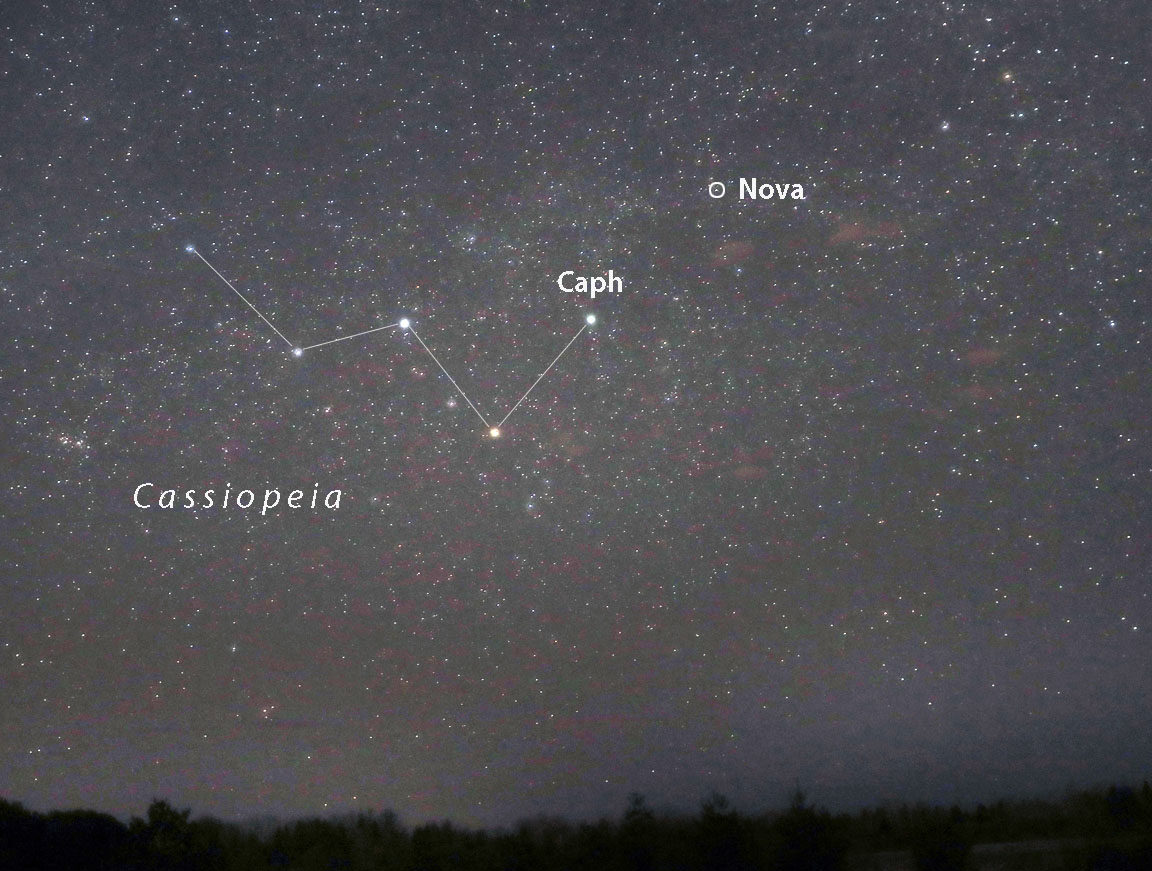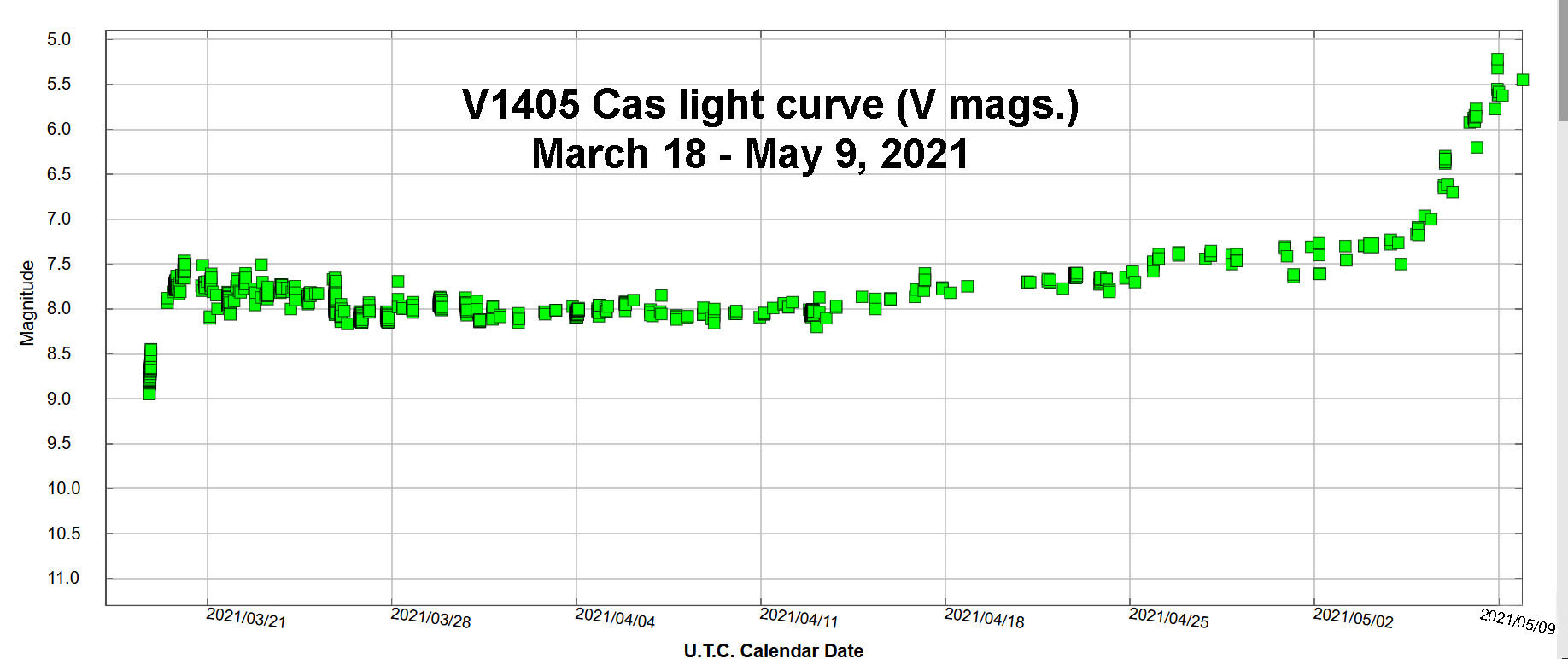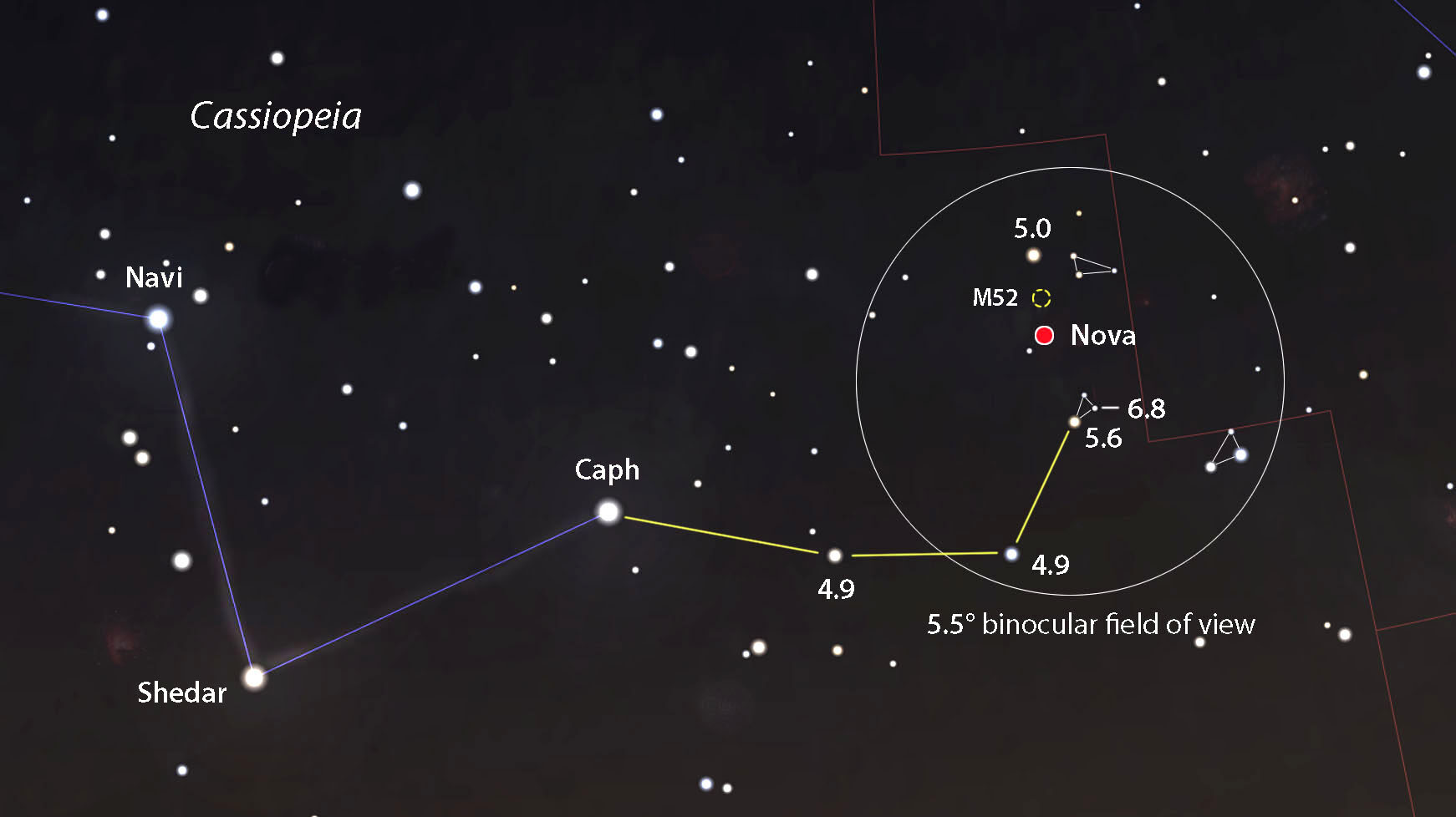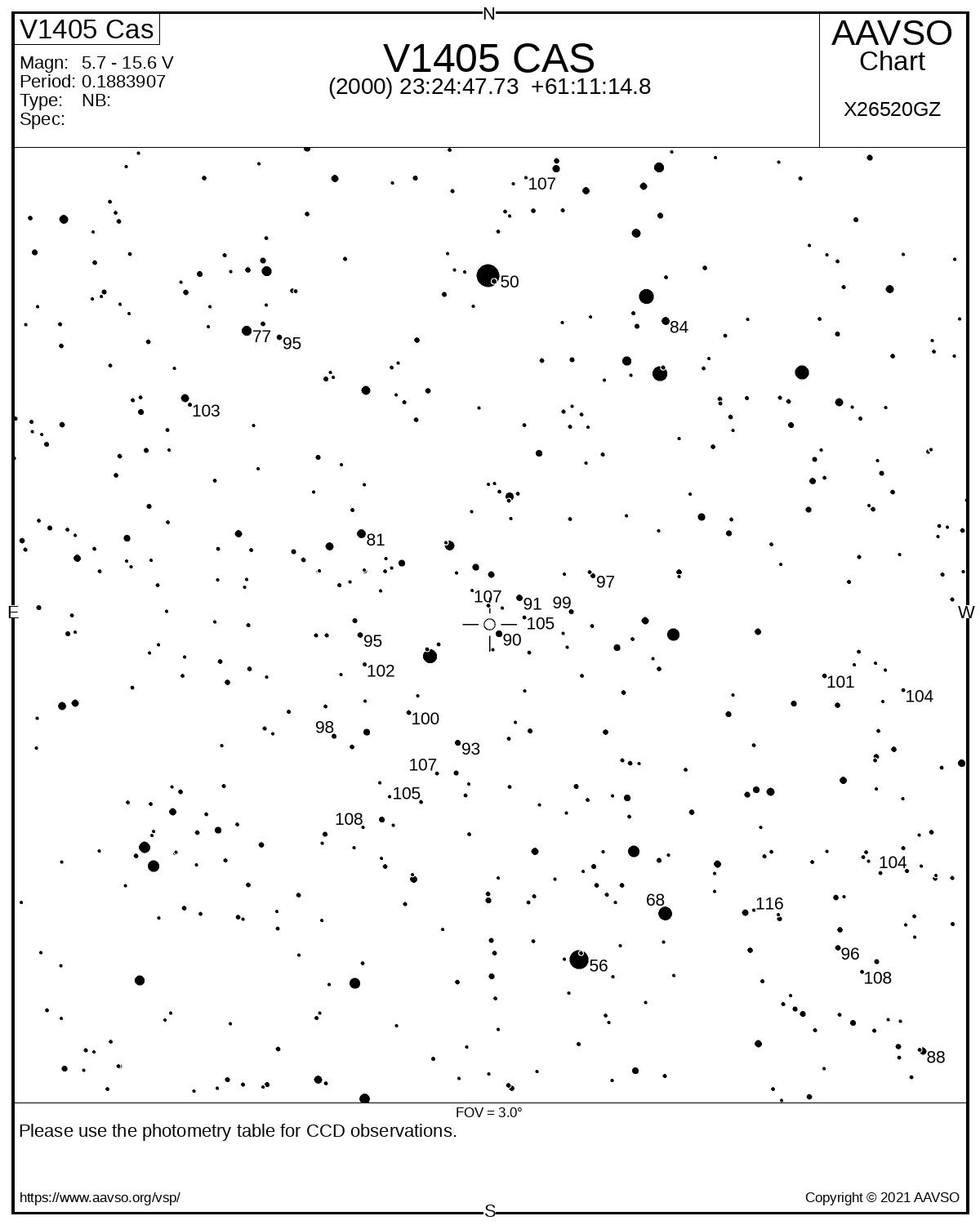A star in the constellation Cassiopeia that flared into view during mid-March has erupted to naked-eye visibility. Catch it while you can!

© Bob KingNova Cassiopeia 2021 (V1405 Cas) shines at magnitude 5.5 on Saturday night, May 8th, from Duluth, Minnesota. It's located about 5.5° above the familiar W of Cassiopeia. The view faces north around 11:30 p.m. local time.
Novae are full of surprises. When discovered at the onset of the explosion, a nova can brighten from obscurity and become visible in binoculars in a matter of hours. Some plateau and then fade. Others fade and then temporarily re-brighten one or more times before returning to their former slumbers.
Enter
Nova Cassiopeiae 2021, formally named V1405 Cassiopeiae. Discovered at magnitude 9.6 by Japanese amateur Yuji Nakamura on March 18th, it rapidly brightened to around magnitude 7.5-8.0 magnitude, then remained fairly constant in brightness for the next four weeks at magnitude 8.0. In mid-April the nova began to slowly brighten again, ending the month at magnitude 7.5.

© AAVSOThis light curve of V1405 Cas tracks its changes in brightness from discovery (left) to May 9 UT. The uptick in early May is striking.
As of May 8-9, it's still climbing, albeit more slowly. I spotted the nova without optical aid on May 9.18 UT at magnitude 5.5. At the time, Cassiopeia hung below the North Star at its nadir. At 20° altitude it appeared faint and required averted vision, but it was still a thrill to see with the naked eye. While several novae are discovered each year, bright ones are uncommon.

© Stellarium with additions by the authorThis map shows the western half of the W and a suggested path (yellow) to the nova. North is up. I included the magnitudes of several stars so you can judge the nova's changing brightness. For example, if it's halfway between 5.0 and 5.6, then its magnitude would be 5.3. Record your observations to keep a record of its ups and downs over the coming weeks and months.
Of course, you don't have to strain your eyes if you don't want to. It's super easy to spot the nova in any pair of binoculars right now. Located near the familiar W of Cassiopeia — a circumpolar constellation from mid-northern latitudes — it's up all night from many locales.
Pre-dawn viewing is best when the nova stands highest in the northeastern sky, but as long as you have an unobstructed view to the north and see Cassiopeia, it's within reach.

© AAVSOYou can also use this AAVSO chart to determine the nova's brightness. It displays a greater range of comparison stars, making it useful for following the nova when it begins to fade again. North is up and star magnitudes omit the decimal.
Start at 2nd-magnitude Caph, located at the western end of the
W, and use the brighter stars and homemade triangle asterisms shown on the map as steppingstones to the nova. Just south of the nova look for a bejeweled, fuzzy patch of light, the bright star cluster M52.
According to observations reported in Astronomical Telegram
14614, V1405 Cas appears to have reached its maximum brightness. To some, the word "nova" conjures up visions of either an exploding star, after the manner of supernovae, or an old Chevy. But a nova always involves two stars in close orbit, and each goes on to live another day.
A nova occurs when a small but incredibly dense white dwarf strips hydrogen gas from its sun-like companion. Like water going down a bathtub drain, the material spirals its way to the dwarf's surface, where it's heated and compacted by gravity until the hydrogen fuses and releases energy in an enormous explosion, much like a thermonuclear bomb. The blast brightens the star system some 50,000 to 100,00 times as the material gets shot into space at speeds of several million miles an hour.
Good thing we can watch it happen from a safe distance. For information on the nova's current brightness, pay a visit to the AAVSO (American Association of Variable Star Observers)
website. Just type V1405 Cas in the
Pick a Star box to see a list of recent observations or to create a chart or light curve. Have at it!







Reader Comments
to our Newsletter